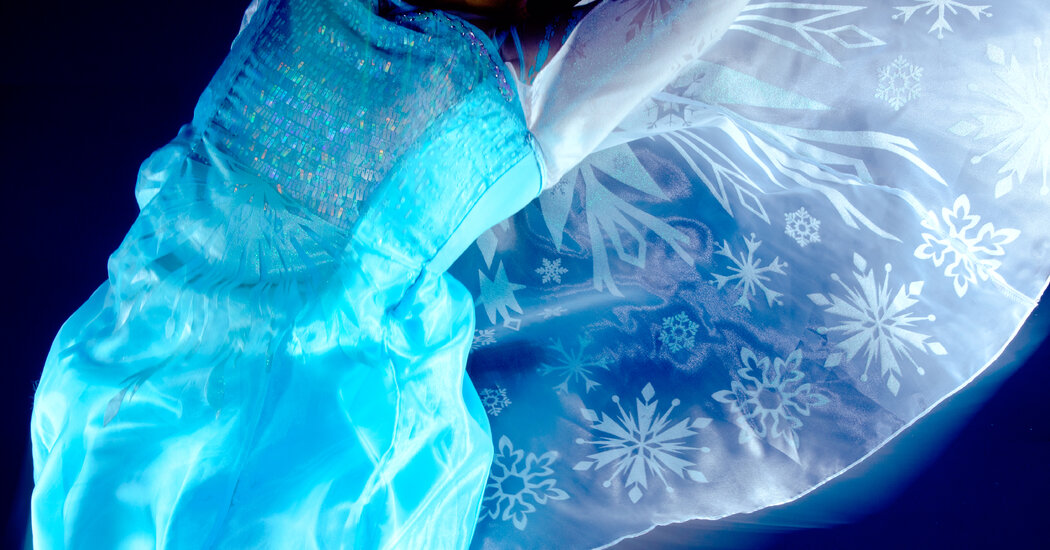Gimel Hooper, 49, who is black, did not want to show “Frozen” to his daughter for similar reasons. But after a friend’s mother gave her an Elsa doll for her fourth birthday, it became his daughter’s favorite toy. “We couldn’t turn left or right without seeing something ‘Frozen,’” said Mr. Hooper, whose daughter is now 10. “That song was playing all the time,” he added of “Let It Go.” “Every child knew it.”
As Elsa sings in the dress, she seems to gain a sense of invincibility, and some parents described Elsa costumes as having a similar effect on their children.
Mr. Hemmig said that at the height of Jace’s “Frozen” obsession, he wore his Elsa dress to Target several times. Jace’s mother, Jean Hemmig, 45, said they let him wear the dress in public because “knowing we had confidence in him” would make Jace feel even more confident.
Britta Shine bought a dress for her then four-year-old foster daughter, who had experienced abuse and neglect, as a way for her to process the intense emotions she sometimes felt. It quickly became her favorite piece of clothing. Ms. Shine, who lives in Detroit and has a Ph.D. in developmental psychology and child mental health, said her foster daughter, now six, stands straighter when she wears the dress. “She feels empowered by it,” Ms. Shine, 42, added.
Meghan and Kevin Dexter, 42 and 43, said their son loved to put on an Elsa costume and play with friends and family in their backyard in Richmond, Virginia, as a toddler. He never wanted to wear it anywhere else, but his parents would have. let him. “If we had to modify every behavior that could make fun of us,” Ms. Dexter said, “we would be dictating far too much about our children.”
Tammy Hart’s 5-year-old Rocco also started dressing up as Elsa as a toddler. Ms. Hart, 43, didn’t mind at all — until Rocco asked if she wanted to wear the dress to school in Brooklyn.





